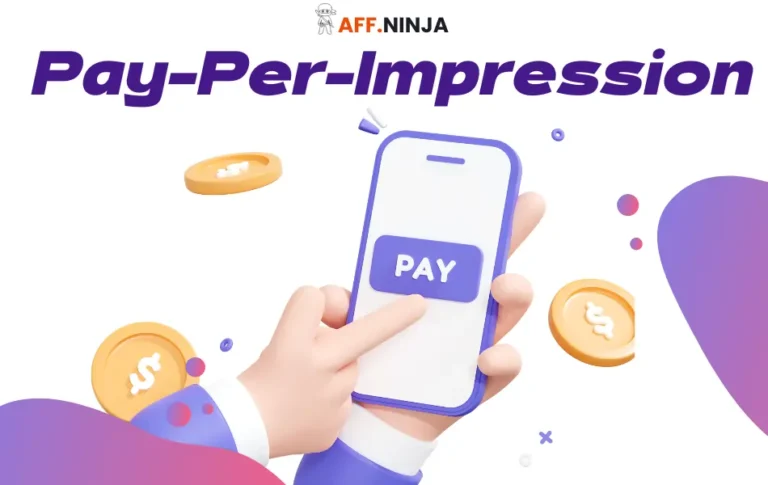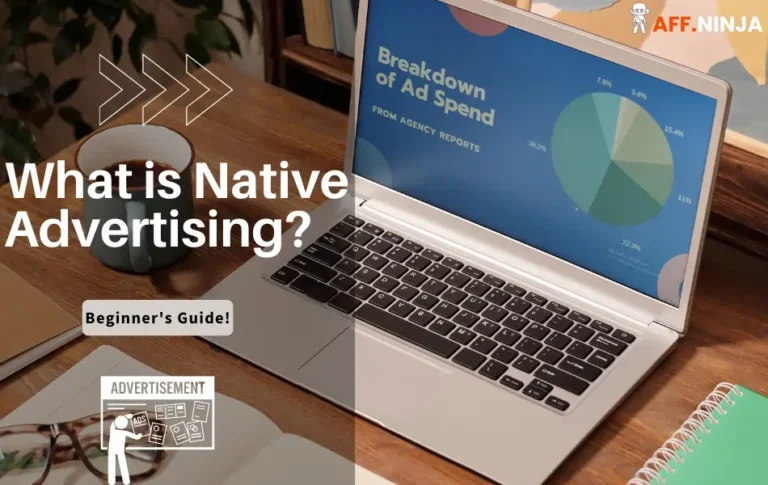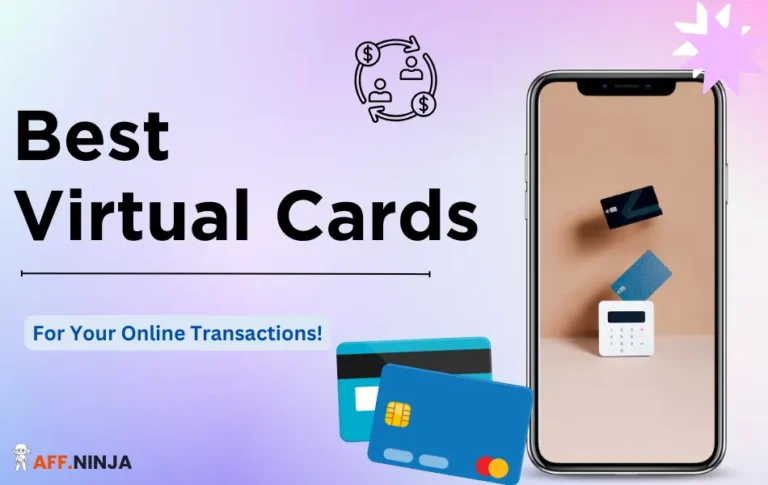Have you ever wondered why you see certain ads while scrolling through your favorite apps or playing mobile games?
Let me introduce you to mobile advertising!
Our smartphones and tablets have become indispensable in the current scenario, making them prime real estate for advertisers. Mobile advertising uses this constant connectivity to deliver targeted, engaging ads directly to your device.
From a banner ad in a game to a video ad on social media, or a personalized offer via SMS, mobile advertising is all about reaching you where you are. But to get a better picture of the opportunities it presents, we'll get along with the KPIs, the latest trends, and what you could do to get better results.
What is Mobile Advertising?
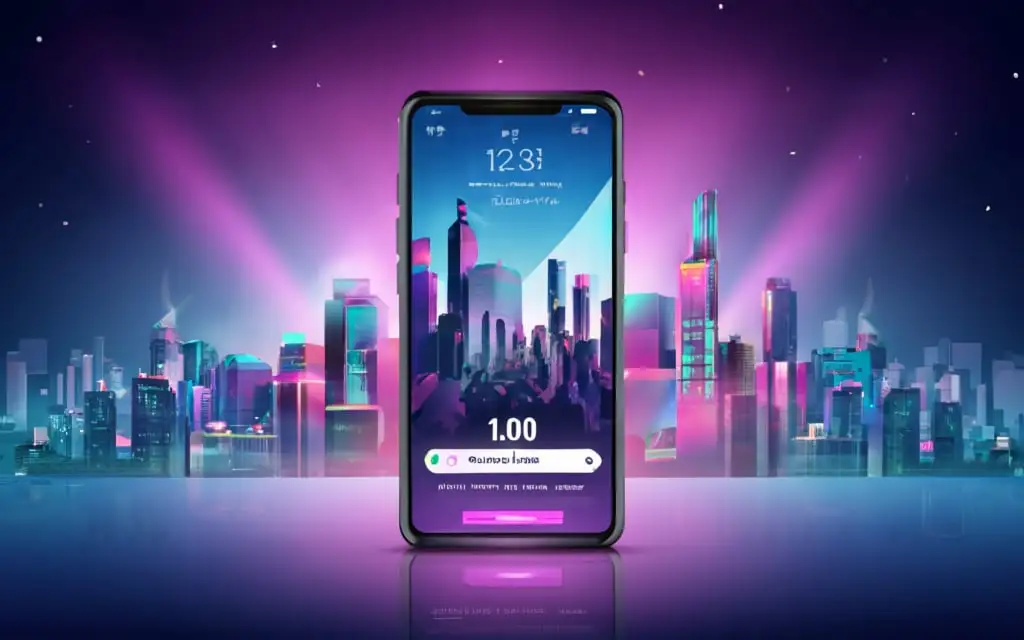
Mobile advertising is a form of digital marketing that delivers promotional content and advertisements to users on their mobile devices, such as smartphones and tablets. It aims to reach and engage consumers where they spend a significant amount of their time – on their mobile devices.
Mobile advertising encompasses various ad formats, including banner ads, interstitial ads, video ads, native ads, and more, tailored for optimal viewing and interaction on smaller screens. These ads can be displayed within mobile apps, websites, social media platforms, and other mobile-friendly channels.
Businesses can increase brand awareness, drive website traffic, promote products or services, and ultimately boost sales and conversions using mobile advertising.
Types of Mobile Advertising
Mobile advertising encompasses various formats tailored to engage users on their mobile devices effectively. Some common types include:
- Display Ads: These visual ads appear within mobile apps or websites, often in banner or interstitial formats. They can feature static images, animations, or videos to capture attention.
- Native Ads: Designed to blend seamlessly with the surrounding content, native ads adopt the look and feel of the platform they appear on, providing a less intrusive advertising experience.
- Video Ads: From short, skippable ads before video content to longer, interactive videos, this format leverages the engaging nature of video to deliver brand messages effectively.
- Social Media Ads: Platforms like Facebook, Instagram, and TikTok offer advertising opportunities tailored for mobile, such as sponsored posts, stories, and in-feed ads, allowing precise targeting based on user data.
- In-App Ads: These ads are integrated within mobile applications, appearing as banners, interstitials, or rewarded videos, offering a way to monetize apps while engaging users.
- Rich Media Ads: Combining various multimedia elements like audio, video, and interactive features, rich media ads provide an immersive and engaging advertising experience on mobile devices.
How Does Mobile Advertising Work?
Mobile advertising works by delivering promotional content and ads directly to users' mobile devices like smartphones and tablets. Advertisers can use mobile ad networks, demand-side platforms (DSPs), and supply-side platforms (SSPs) to purchase ad inventory and display their ads within mobile apps and websites.
When a user visits a mobile app or website, an ad request is sent to an ad network or exchange. The request contains data about the user, such as location, device type, and browsing behavior. Advertisers then bid in real-time auctions to have their ads displayed to that specific user. If an advertiser wins the auction, the ad is served and displayed on the user's mobile device.
Mobile ads can take various formats like banner ads, video ads, native ads, and more, tailored for optimal viewing on smaller screens.
Why KPIs Matter?

In mobile advertising, key performance indicators (KPIs) are like your app's report card. They tell you how well your app and your marketing efforts are doing. Think of KPIs as your trusty sidekicks, helping you figure out what's working and what needs a little tweak. Some of the big ones to keep an eye on are:
- Retention Rate
- Monetization Metrics
- Number of Active Users
- Review Scores
- Chart Rankings
Keeping tabs on these KPIs lets you make smart moves to boost your app's performance and your marketing game. Knowing which KPIs matter most to your goals is the secret sauce to nailing mobile advertising.
Breaking Down App KPIs
Digging into app-specific KPIs is like getting a backstage pass to your app's performance. These numbers give you the lowdown on how users are interacting with your app and how well your app business is doing. Here are some key app KPIs:
| KPI Metric | What It Means |
|---|---|
| Impressions | How many times your ad pops up? |
| Clicks | How many times did folks click on your ad? |
| Installs | How many times has your app been downloaded? |
| Reattribution | Users coming back after a break |
| Sessions | How often users are hanging out in your app? |
| Events Triggered | Specific actions users take in your app |
These metrics help you figure out things like retention rates and user lifetime value. For instance, if your retention rate is high, it means people are sticking around. User lifetime value tells you how much profit you can expect from a user over time. Using a solid KPI service can help you keep track of these numbers and make sense of them.
Mobile Marketing Strategies
Despite having tons of so-called Mobile advertising strategies, here are some of the best mobile marketing strategies that can help you to a great extent, these include mobile-friendly ads, and utilizing social media to your advantage.
Making Mobile-Friendly Ads
One crucial strategy for effective mobile advertising is creating mobile-friendly ads. This involves optimizing ad creatives to ensure they display properly and provide an engaging experience on smaller mobile screens.
Start by using responsive design techniques that automatically adjust the ad's layout and elements based on the device's screen size and resolution. Prioritize visual appeal by using high-quality images, concise copy, and bold colors that grab attention quickly.
Choose ad formats tailored for mobile, such as native ads, interstitial ads, or vertical video ads. Additionally, ensure landing pages are mobile-optimized with fast loading times and easy navigation to maximize conversions from mobile ad clicks.
Here’s how to make the mobile experience better:
- Responsive Design: Make sure your site looks good on any screen size.
- Fast Loading Times: Speed up your site by optimizing images and other elements.
- Intuitive Navigation: Keep it simple so users can find what they need quickly.
Using Social Media to Your Advantage
Taking advantage of social media platforms is an effective strategy for mobile advertising. With billions of active users accessing social apps on their mobile devices daily, social media presents a prime opportunity to reach and engage target audiences. Advertisers can run sponsored posts, stories, and in-feed ads on platforms like Facebook, Instagram, Twitter, and TikTok, seamlessly integrating their promotions into users' social feeds.
Social media advertising allows for precise targeting based on demographics, interests, behaviors, and even real-time location data. This ensures ads are served to the most relevant audiences, increasing the likelihood of engagement and conversions. Additionally, social platforms offer advanced analytics and measurement tools, enabling advertisers to track and optimize their mobile ad campaigns for better performance and ROI.
Here are some tips for using social media:
- Platform-Specific Content: Make content that fits each platform’s vibe and audience.
- Interactive Posts: Use polls, quizzes, and live videos to get people involved.
- User-Generated Content (UGC): Get your customers to share their experiences with your brand. UGC feels more real and trustworthy, which means more engagement.
| Social Media Platform | Key Feature | Engagement Strategy |
|---|---|---|
| Groups & Events | Create interactive groups and host live events | |
| Stories & Reels | Use visual storytelling and short videos | |
| Trending Hashtags | Jump into trending conversations | |
| TikTok | Short-Form Video | Make viral, fun content |
By focusing on making your site user-friendly and using social media smartly, you can create killer mobile marketing strategies. These moves not only boost engagement but also drive revenue and build customer loyalty.
How Mobile Marketing Changed the Game?
Well, mobile advertising has pretty much changed the game when it comes to customer interaction and experience, this includes shopping decisions being made, along with mobile ad personalization.
How We Shop and Decide?
Mobile marketing has flipped the script on how we shop and make decisions. With smartphones and tablets everywhere, we can now research, shop, and decide on the fly. This has put mobile devices right at the heart of our buying process.
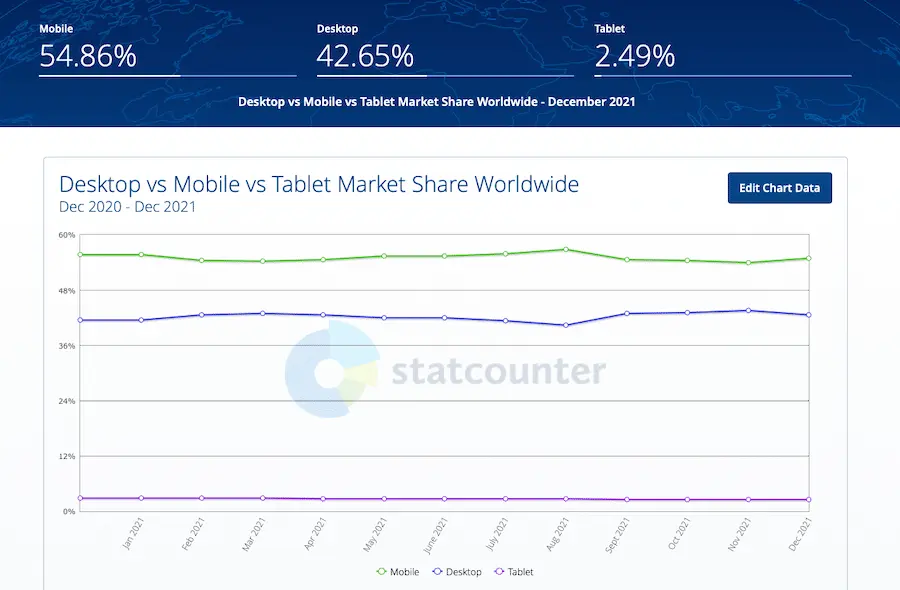
Think about it: over half of all online searches happen on mobile devices. This means mobile marketing is key to getting info about products and services into our hands through apps and websites. From the first search to the final purchase, our phones are now our go-to shopping buddies.
Making It Personal
The personalization of mobile ads has pretty much upscaled the mobile marketing industry. By leveraging user data, such as browsing history, location, and preferences, advertisers can deliver highly targeted and relevant ads to individual users on their mobile devices. This personalized approach enhances the user experience, as consumers are presented with ads tailored to their interests, increasing the likelihood of engagement and conversions.
Moreover, personalized mobile ads allow for precise audience segmentation, enabling advertisers to reach specific demographics, behaviors, or interests with laser-focused messaging. This level of granularity not only improves ad effectiveness but also optimizes marketing budgets by minimizing wasted impressions.
As a result, personalized mobile ads have become a game-changer, fostering stronger connections between brands and consumers while driving better returns on investment for advertisers.
HilltopAds: Leading the Way in Mobile Advertising

HilltopAds stands out as one of the best mobile ad networks, offering a suite of tools and services designed to maximize your advertising reach and effectiveness. Known for its high-quality traffic and advanced targeting options, HilltopAds ensures that your ads reach the right audience at the right time. The platform supports various ad formats, including banners, interstitials, and native ads, providing flexibility to create engaging campaigns.
With real-time analytics and a user-friendly interface, HilltopAds allows advertisers to monitor performance and optimize campaigns effortlessly. From boosting app installs or drive mobile web traffic, HilltopAds delivers exceptional results, making it a top choice for mobile advertisers.
Metrics for Success in Mobile Advertising
The success of the metrics does not completely rely upon just clicks and impressions, but some other parameters. Two key metrics that marketers swear by are Return on Investment (ROI) and Customer Lifetime Value (CLV). These numbers tell you if your marketing dollars are well spent and if your customers are sticking around for the long haul.
Return on Investment (ROI)
ROI is like the report card for your marketing efforts. It shows how much profit you're making compared to what you spent. Imagine you spend $2,500 on a paid search campaign and it brings in $10,000 in sales. Your ROI would be $7,500 or 300%. The higher the ROI, the better your campaign is doing.
| Campaign Cost | Sales Revenue | ROI Calculation | ROI Percentage |
|---|---|---|---|
| $2,500 | $10,000 | ($10,000 – $2,500) / $2,500 | 300% |
Knowing your ROI helps you figure out where to put your money for the best results. If one campaign is killing it, you can pump more cash into it. If another is tanking, you can cut your losses and move on.
Customer Lifetime Value (CLV)
CLV is all about the long game. It tells you how much money a customer is likely to bring in over their entire relationship with your company. For example, if a customer spends $1,000 a year and sticks around for four years, their CLV is $4,000.
| Annual Revenue per Customer | Expected Customer Lifespan (Years) | CLV Calculation | CLV Value |
|---|---|---|---|
| $1,000 | 4 | $1,000 * 4 | $4,000 |
Understanding CLV helps you make smarter decisions about how much to spend on acquiring new customers and keeping the ones you have. If you know a customer is worth $4,000 over their lifetime, you might be willing to spend more to get them in the door.
What's Hot in Mobile Advertising?
Mobile advertising is always changing, and if you're a marketer, you gotta keep up. Some of the latest trends in mobile advertising consist of AR Advertising, Video and Interactive ads, Personalization and Hyper targeting, Social Commerce and Influencer Marketing, and the last one being so far is 5G and Edge computing.
Augmented Reality (AR) Advertising

Augmented reality (AR) has become a game-changer in mobile advertising, allowing brands to create immersive and interactive experiences for users. AR ads overlay digital content onto the real world, enabling users to virtually try on products, visualize furniture in their homes, or interact with branded content in innovative ways. This technology enhances user engagement and provides a memorable advertising experience.
Video and Interactive Ads

Video ads and interactive ad formats are gaining significant traction in mobile advertising. Short, attention-grabbing videos and interactive elements like playable ads, shoppable videos, and gamified experiences effectively capture users' interest and drive higher engagement rates. These ad formats offer a more engaging and entertaining way for brands to connect with their target audiences.
Personalization and Hyper-Targeting

With the abundance of user data available, personalization and hyper-targeting have become crucial in mobile advertising. Using artificial intelligence (AI) and machine learning, advertisers can deliver highly personalized and relevant ads based on users' interests, behaviors, and preferences. This targeted approach increases the likelihood of user engagement and conversions.
User Generated Content and Marketing
User-generated content (UGC) is taking over mobile advertising. This is stuff like reviews, photos, videos, and social media posts made by regular folks, not brands. People trust UGC because it's real and relatable, making it super effective for engagement and conversions.
UGC works because it's seen as more genuine than traditional ads. This means higher engagement, more impressions, and better conversions. Brands can tap into UGC by encouraging customers to share their experiences, making it a cost-effective way to create content.
| Content-Type | Source | Benefits |
|---|---|---|
| Branded Content | Company | Consistent messaging, professional quality |
| UGC | Consumers | Authenticity, trustworthiness, relatability |
Using UGC in your campaigns can make them feel more personal and engaging. It shows real customer experiences, building trust, and creating a community around your brand. This not only boosts loyalty but also keeps customers coming back.
5G and Edge Computing
5G is here, and it's shaking things up in mobile advertising. Big names like AT&T and Verizon splashed out a whopping $68.8 billion on the C-BAND spectrum in 2021, setting the stage for some serious growth. By the end of 2021, only 660 million mobile subscriptions were 5G, so there's a lot of room to grow. Well, as stated in the graph and table below, the projection for this month alone is 2.6 billion+ 5G mobile subscriptions.

With 5G, we're talking faster speeds and less lag. This means better video ads and more interactive stuff in games and apps. Advertisers can now make ads that really grab your attention and keep you hooked.
| Year | 5G Mobile Subscriptions (Millions) |
|---|---|
| 2021 | 660 |
| 2022 | 1,000+ |
| 2023 | 1,500+ |
| 2024 | 2600+ (Projected) |
For marketers, 5G opens up new ways to place and target ads. Better connectivity means real-time data, which means more precise targeting and better ad campaigns.
Mobile Games
Mobile games aren't just for playing anymore; they're becoming social networks. Developers are adding features that let players chat, compete, and team up, turning games into social hubs.
This is a goldmine for advertisers. By tapping into these social interactions, brands can create ads that feel personal and interactive, making them more effective.
Advertisers can use native advertising and video advertising in these games to boost user experience and engagement. This leads to better ROI.
Got Queries? Got You Covered
How do Social Media Platforms Fit into Mobile Advertising?
Social media platforms like Facebook, Instagram, and TikTok offer targeted ad placements, allowing advertisers to reach specific audiences with sponsored posts, stories, and in-feed ads.
What is the Role of Personalization in Mobile Advertising?
Personalization uses user data to deliver relevant ads, enhancing user experience and increasing the likelihood of engagement and conversions.
What are Rich Media Ads?
Rich media ads combine multimedia elements like audio, video, and interactive features to create an immersive and engaging advertising experience on mobile devices.
How can Businesses Optimize their Mobile Ads?
Optimize by creating mobile-friendly ad creatives, using location data, leveraging video and interactive formats, and testing different ad placements.
Pathway to Higher ROIs
To wrap up our exploration of mobile advertising, let's reflect on how this dynamic field has transformed the way businesses connect with consumers. Mobile devices have become an integral part of our daily lives, presenting a unique opportunity for advertisers to reach their target audiences in a highly personalized and engaging manner.
From interactive video ads to augmented reality experiences, mobile advertising continues to push the boundaries of creativity and innovation.
As we move forward, the future of mobile advertising looks even more exciting, with advancements in artificial intelligence, 5G technology, and voice-based interactions set to completely change the industry further.
With that all being said, let's end this article, and experience what the future has got for us.



